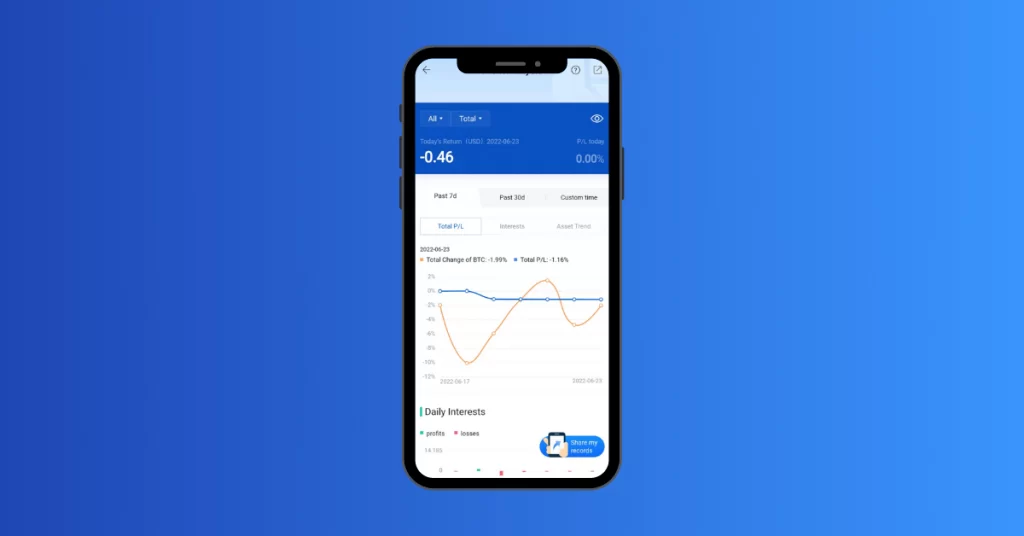
The post Web3 Awaits: How Crypto Exchanges And Users Can Benefit appeared first on Coinpedia - Fintech & Cryptocurreny News Media| Crypto Guide
The past three decades have witnessed the traditional narrowband Internet era known as Web1 transit to the 5G mobile Internet-led Web2, with this transition came both political and economic landscape changes worldwide. The year 2020 saw breakthroughs in the form of many key digital information technologies alongside the economic onslaught wrought by the Covid-19 epidemic; as a result, many traditional businesses and business models have had to be digitally revamped.
While Web1 and Web2 were mostly implemented on Web pages and mobile applications that have come to be familiar with users of the Internet, the upcoming Web3 era will be a decentralized, open and practical-inclined network. With the transition from Web2 to Web3, cryptocurrency exchanges are serving as gateways to the decentralized world.
Making money “easy and smart” is one of the important reasons for centralized exchanges to realize long-term operation and development. In the Web2 era, centralized exchanges have created user-centric interfaces to continuously meet and improve user needs.
Over the past few years, many centralized exchanges have adopted various strategies to stay competitive and diversify, and have even worked on developing innovative DeFi products. However, due to various reasons, most small and medium-sized exchanges have gradually disappeared. The reason is simple: users will only turn toward exchanges that meet their needs.
In the Web2 era, centralized exchanges play a role similar to traditional stock exchanges and banks, helping buyers and sellers conduct transactions and providing security. This makes users of centralized exchanges more passive in nature, because neither their personal nor industry data is controlled by themselves. The various pages and data users see may not be an accurate reflection. In Web3, the decentralized underlying architecture enables them to easily obtain and fully control their data. But why do we need Web3 in addition to this? How can crypto exchanges and users benefit, and what changes will it bring to people’s lives?
1. Visual and modular data
Data provided by the exchange functions like a qualified financial manager, where users enjoy seeing the growth of their digital assets through the data page. This growth is based on the use of exchanges, both horizontally and vertically.
Huobi Global has become a popular cryptocurrency trading platform among global investors. This rapid pace of development is largely the result of the platform’s efforts to create visual investment tools. Huobi Global’s improvements in data visualization and ease of use have greatly increased the number of users due to the benefits they provide.
 Figure:Past 7 day Profit Analysis
Figure:Past 7 day Profit AnalysisImage Source:Huobi Global APP
In the Web2 era, cryptocurrency exchanges tend to focus more on liquidity and depth, while ignoring the availability of the data flow the figures presented. With the improvement of user trading experience and the repeated market cycles, users would tend to place an increased focus on research before making investment decisions, therefore more expert analysis or quantitative tools are required. For cryptocurrency exchanges, modular data boards can equip users with professional-level data.
Crypto exchanges deal with large amounts of data. The setting of data indicators, the design of the data board, and the presentation of modular data results will greatly improve the user’s investment experience and convince users of the soundness of their investment decisions. Current leading exchanges such as Huobi Global, Binance and Coinbase have given users permission to apply for data dashboards.
How to truly optimize users’ investment decisions and benefit them will determine the loyalty of cryptocurrency exchange users. For crypto exchanges that have accumulated a large amount of raw transaction data, analyzing these real-time data can not only empower users but also bring more volume to the exchanges. Such is the significance of Web3.
2. Security and Stability
Internal and external malicious threats are the two major security issues faced by exchange data, because centralized exchanges still require a lot of human resources to maintain platform security. In the Web3 era, users can use custom tracking addresses to comply with anti-money laundering requirements. The tool can be submitted to users for alerts and risk ratings on suspicious transactions.
The data that exchanges collect from their own channels is limited. How data can be used in partnership with other organizations in the Web 3.0 world is also a tool to inspire data availability. By constantly seeking the possibility of data cooperation with projects outside the exchange ecosystem, the crypto exchange is expected to explore more business forms.
Many holders of cryptocurrencies suffered heavy losses in the recent cryptocurrency market crash. Some crypto exchanges seem to have been impacted by the market crash, with several setting withdrawal limits and other operational adjustments. Following the recent market turmoil, Huobi Global immediately stepped up measures to protect users’ assets from serious security incidents. Its daily operations including deposits and withdrawals remained normal.
The cryptocurrency industry has experienced many ups and downs since its inception. In these times, the market also increasingly needs a safe and stable exchange like Huobi Global to hedge against industry turmoil. In the era of Web3, the exchanges that have tried their best to protect users in the storm will be fed back by users and the industry, gaining more traffic and resources.
3. Innovation
Innovation is a huge force for revolution, and a new era will undoubtedly give back to those projects that laid the foundation for the development of the era. Despite numerous challenges, there have been innovative technical achievements, such as zk, modular public chain and other expansion schemes that are promising to propel the blockchain to new heights.
As one of the leading crypto asset exchanges in the industry, Huobi Global is committed to leading the development of the entire industry in technological innovation through various forms of support. Huobi has invested in OptimismPBC, zkSync and other high-quality Layer 2 programs, and is willing to take on the role of an active partner in high-potential project teams in order to solve these pressing issues.
NFT, with its characteristics of digital scarcity, uniqueness and verifiability, provide confirmation of digital ownership for and play a pivotal role in entering the Web3 era. Huobi is focused on building a cohesive NFT platform and community, enabling more creative developers, artists and users to participate in and mutually enjoy the benefits offered by the industry.
When the era of Web3 comes, these projects that provide the underlying technical facilities and economic entrance for Web3 will be the first to enjoy the dividends of industry development and growth.
Bottom Line
Similar to exchanges who require a high-concurrency, high-performance and high-security trading system, the future Internet will see a user-centered, personalized data sovereignty as the value of a decentralized economic environment. When the era develops to a certain stage, changes will inevitably occur. A brand new digital era will certainly feed back those who lead the wave and play a huge role in the change.

 3 years ago
156
3 years ago
156














 English (US) ·
English (US) ·